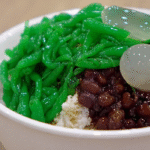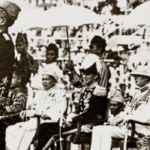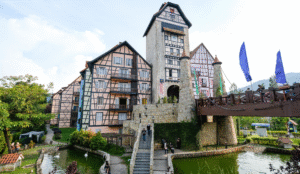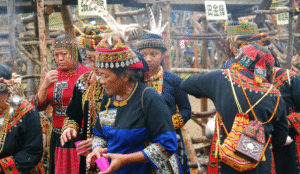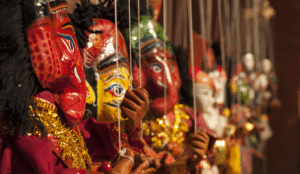Why Malaysian Batik Still Matters: The Story of a Textile Treasure
When you walk into a local market or attend a traditional Malaysian ceremony, chances are you’ll encounter a striking array of colors, patterns, and textiles. Among them stands one of Malaysia’s most cherished cultural symbols: Malaysian batik. More than just a fabric, it represents a rich heritage, a form of artistic expression, and a piece of history that continues to hold relevance in today’s modern society.
Frequently Asked Questions (FAQ)
1. What is the Malaysian batik famous for?
Malaysian batik is renowned for its vibrant and colorful designs, often inspired by natural elements such as flowers, leaves, and butterflies. Unlike its Indonesian counterpart, Malaysian batik commonly features brush-painted or stamped patterns and avoids human and animal motifs due to Islamic artistic influences. It is especially famous for its elegance, symbolic cultural value, and wearability across formal and casual settings.
2. Why is batik important in Malaysia?
Batik holds cultural, historical, and economic importance in Malaysia. It is a living representation of the country’s artistic identity and craftsmanship, often passed down through generations. Batik also plays a central role in national celebrations, school uniforms, tourism souvenirs, and international cultural diplomacy. As a textile art form, it connects Malaysians with their heritage and promotes cultural appreciation.
3. How is batik made in Malaysia?
The process of making batik in Malaysia typically involves either hand-drawn (canting) or block-stamped (cap) techniques. The fabric is first washed and stretched, then designs are applied using wax. The fabric is dyed in stages, and the wax is boiled off to reveal the patterns. This process may be repeated for more intricate, multi-colored designs. Each batik piece is unique and requires skilled artistry.
4. Where can you usually find Malaysian batik?
Malaysian batik can be found in traditional markets, craft centers, boutiques, and major shopping malls across the country. Notable places include Kota Bharu (Kelantan), Kuala Terengganu (Terengganu), and Central Market (Kuala Lumpur). It is also available through online platforms and exported globally. Artisans and fashion designers often showcase batik during cultural festivals and fashion weeks.
5. How is batik used today?
Today, batik is worn as both traditional and modern attire. It appears in kebaya, sarong, baju kurung, men’s shirts, scarves, ties, handbags, and even shoes. In contemporary design, batik is being reimagined in haute couture, interior décor, and lifestyle products. Schools, government offices, and corporations also designate batik attire days to celebrate this heritage.
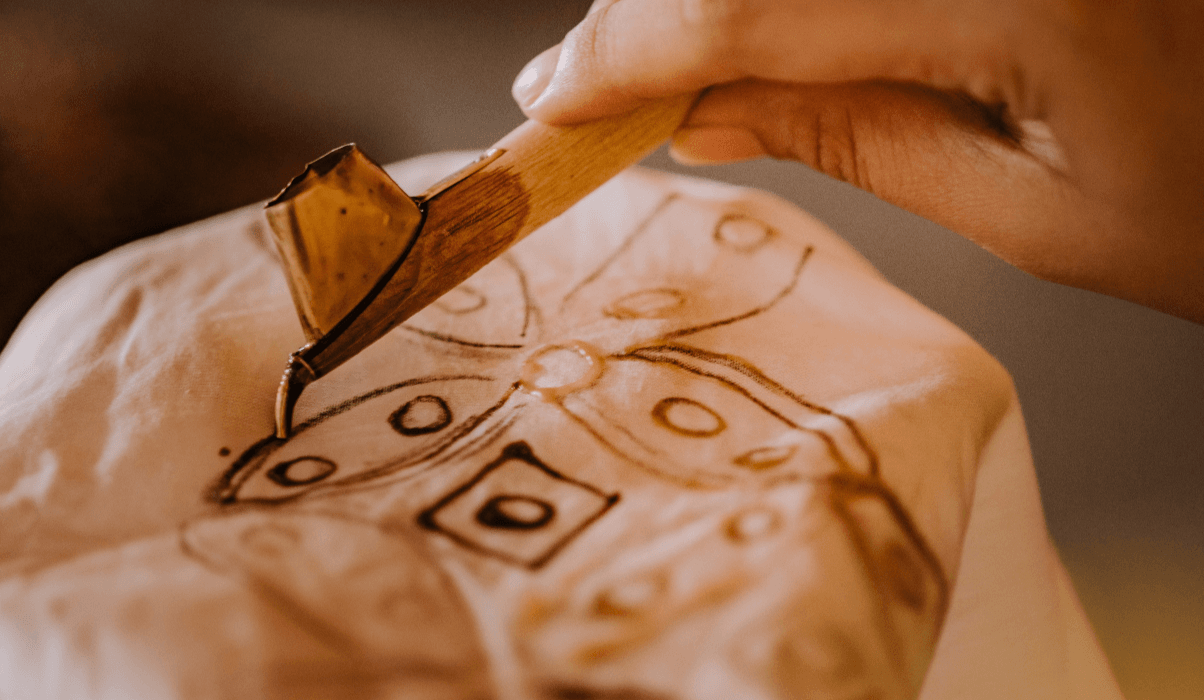
The Origins of Malaysian Batik: A Cultural Melting Pot
The roots of Malaysian batik trace back centuries, deeply intertwined with Malaysia’s long history of trade, migration, and cultural exchange. The earliest evidence of batik techniques in the region dates as far back as the 13th century. Traders from India, China, the Middle East, and Indonesia brought their textiles and techniques to the Malay Archipelago, influencing the local styles and practices.
Although batik has strong associations with Java, Indonesia, it evolved independently in Malaysia. While Javanese batik is characterized by intricate, symbolic motifs often created using a canting (a small copper pen filled with hot wax), Malaysian batik adopted a different approach. Local artisans preferred the brush-painting technique, which allowed them to produce larger, more vibrant floral and abstract motifs quickly and with more freedom of expression.
The craft found a stronghold in the East Coast states, particularly in Kelantan and Terengganu, where batik-making became both a cultural tradition and an economic enterprise. Workshops were often family-run, and skills were passed down from generation to generation. These communities developed their own distinct styles, incorporating local flora and fauna into the designs and adding Malay aesthetic values.
During the colonial era, batik served as a symbol of resistance and cultural pride. Even under British influence, local artisans continued to preserve the batik tradition, often blending colonial motifs with local designs. Post-independence, batik emerged as a unifying national symbol, proudly representing Malaysia on the global stage.
Malaysia Batik Meaning in Cultural Context
The Malaysia batik meaning goes far beyond fashion or design. It is a living artifact of Malaysia’s multicultural identity. Batik bridges the past and present, embodying Malay values while also resonating with Chinese, Indian, and Indigenous communities.
Batik is worn during various important events: weddings, festivals like Hari Raya and Deepavali, official government functions, and cultural exhibitions. It plays a particularly significant role in Malay wedding traditions. Brides and grooms often wear coordinated Malaysian batik outfits as a tribute to heritage, symbolizing unity, continuity, and grace.
In a broader sense, batik is also used in corporate and educational settings. Many civil servants wear batik on Thursdays; an initiative started by the government to promote national pride and preserve local traditions. Schools also encourage students to wear batik for certain occasions, reinforcing its symbolic value.
Even in religious contexts, Malaysian batik holds significance. Many Islamic scholars and community leaders prefer wearing batik during sermons or communal gatherings, seeing it as a respectful yet culturally expressive choice. This wide range of usage underlines batik’s ability to transcend cultural, social, and even religious boundaries.
Symbolism in Batik Motifs and Colors
Every batik design tells a story. Common motifs include hibiscus (Malaysia’s national flower), bamboo shoots (symbolizing resilience), waves (freedom), birds (hope), and creeping vines (growth). These motifs are not chosen randomly; they carry deep cultural significance.
Colors also matter. Bright reds and oranges may symbolize celebration and vitality, while blues and greens are associated with calmness, harmony, and nature. Traditional Malaysian batik relies on harmonious color palettes that reflect the tropical environment and spiritual values of the Malay worldview.
Over time, the meanings attached to these patterns and hues have evolved, especially with contemporary designers incorporating modern elements. Yet, the original symbolic language remains a core aspect of the Malaysia batik meaning and artistic identity.
Motifs may also vary regionally. In Kelantan, artisans may emphasize intricate floral themes with spiritual undertones, while in Terengganu, patterns tend to be more geometric and influenced by Islamic art. Each region brings its own cultural interpretation to Malaysian batik, adding layers of depth and diversity to its meaning.
In-Depth Look at the Batik-Making Process
Creating Malaysian batik is an elaborate, hands-on process that requires creativity, precision, and dedication. Let’s delve deeper into the step-by-step stages that transform a blank fabric into a vibrant piece of wearable art.
- Design Sketching: The process begins with drawing the motif on white cotton or silk. Designs are often sketched freehand by experienced artisans or traced using stencils.
- Waxing (Wax Resist Application): Hot wax is applied over the areas that should resist dye. While Indonesian batik uses canting for detailed work, Malaysian artists often use brushes or carved wooden blocks. This technique allows more spontaneity and larger, bolder designs.
- Dyeing: After the wax is applied, the fabric is submerged or painted with dye. In multi-colored pieces, the dyeing process is repeated several times. Each time, new wax is applied to protect areas that should retain the previous color.
- Boiling and Drying: Once the coloring is complete, the fabric is boiled to remove the wax. The cloth is then washed, dried, and checked for imperfections.
- Finishing Touches: Some batik pieces may undergo additional painting or embellishments. High-end Malaysian batik often includes hand-painted details to enhance its uniqueness.
This slow, meticulous process contributes to batik’s sustainability and authenticity. Unlike fast fashion, no two batik items are the same—each piece reflects the artisan’s personal touch and regional influence.
Some artisans are now incorporating natural plant-based dyes, such as indigo, turmeric, and mangosteen bark, to reduce environmental impact. These methods not only honor traditional ecological practices but also produce rich, earthy tones with their own unique textures.
Batik’s Role in the Economy and Tourism
Beyond its cultural significance, Malaysian batik contributes to the national economy. It supports a network of small-scale artisans, designers, textile producers, and retailers. Batik villages in Kelantan and Terengganu are not only production hubs but also tourist attractions.
Visitors can participate in hands-on batik workshops, where they learn the basics of wax-resist dyeing and create their own batik souvenir. These experiences offer deeper insight into Malaysia’s heritage and help generate income for local communities.
With the growth of eco-tourism and cultural tourism, batik’s role has become even more prominent. Government programs like “Kraf Kampungku” (My Village Crafts) promote batik as a heritage product, creating opportunities for rural artisans to thrive.
Local economies are significantly boosted by tourism related to batik. Some communities have even developed batik homestay programs, where visitors live with artisan families, experience the batik-making process firsthand, and learn the deeper cultural context behind each piece.
Revival Through Fashion and Innovation
In recent years, fashion designers have played a pivotal role in reviving Malaysian batik. Brands like Bernard Chandran, Rizalman Ibrahim, and local startups are incorporating batik into modern clothing—from evening gowns to streetwear. Collaborations between fashion houses and artisans ensure that the art of batik remains relevant.
Digital platforms have also revolutionized how batik reaches consumers. Online stores and social media have made it easier for independent designers and cooperatives to sell their products globally. Instagram, for example, is filled with pages showcasing creative batik design in everything from tote bags to headscarves.
Many designers now experiment with eco-friendly techniques, using natural dyes from plants and sustainable fabrics. Some even employ digital batik printing, blending tradition with technology.
Fashion-forward Malaysians are proudly mixing batik with modern clothing like denim jackets, office wear, and sneakers. This fusion helps younger generations relate to Malaysian batik and embrace it as part of their daily lives.
Batik as an Educational and National Symbol
Several schools and universities have integrated Malaysian batik into their curricula. Students are taught about its history, symbolism, and techniques. Workshops and competitions encourage young Malaysians to take pride in their heritage and contribute to its evolution.
On a national level, batik represents unity in diversity. It’s one of the few cultural elements embraced across different ethnic groups. During National Day and other major holidays, Malaysians proudly wear batik as a collective expression of identity.
In 2023, the Ministry of Tourism, Arts, and Culture launched the “Batik Malaysia Movement,” which aims to increase batik visibility in everyday wear. This includes incentives for workplaces that adopt batik uniforms and campaigns promoting local batik brands.
Cultural exhibitions, batik parades, and nationwide design contests have further energized public interest. Even international schools in Malaysia are beginning to include batik appreciation in their multicultural education programs.
Global Recognition and UNESCO Ambitions
While Indonesian batik was recognized by UNESCO as an intangible cultural heritage in 2009, efforts are now underway to have Malaysian batik similarly acknowledged. Scholars, artists, and cultural activists are lobbying for international recognition, emphasizing Malaysia’s unique contribution to the batik world.
Exhibitions in Paris, London, and Tokyo have featured Malaysian batik, showcasing its artistic depth and versatility. Diplomats often gift batik to foreign leaders, positioning it as a cultural ambassador. As awareness grows, so too does appreciation for Malaysia’s textile treasure.
Some believe that UNESCO recognition could open doors to greater funding for preservation efforts, more international collaborations, and better protection of traditional artisan rights. It would also boost Malaysia’s profile in the global heritage and fashion sectors.
Why Malaysian Batik Still Matters
In a world grappling with identity loss, environmental degradation, and mass-produced uniformity, Malaysian batik offers something rare: authenticity. It reminds us of the value of craftsmanship, the importance of cultural continuity, and the beauty of diversity.
It matters because it empowers. It sustains communities, inspires artists, and educates future generations. Whether worn as a scarf, shirt, or framed artwork, it tells stories that deserve to be heard.
It matters because it adapts. As styles evolve, Malaysian batik evolves with them, without losing its soul. It is both old and new—a paradox that reflects Malaysia itself.
It matters because it educates. When we study batik, we learn not just about textiles, but about our environment, history, values, and ourselves.
Final Thoughts
Malaysian batik is not just a textile—it is a living tradition. It embodies the resilience of a culture that adapts while staying true to its essence. As more people begin to appreciate slow fashion and artisanal products, batik is finding its place not only in museums and heritage centers but in everyday life.
So the next time you wear or gift Malaysian batik, know that you’re not just sharing fabric—you’re sharing a story.
